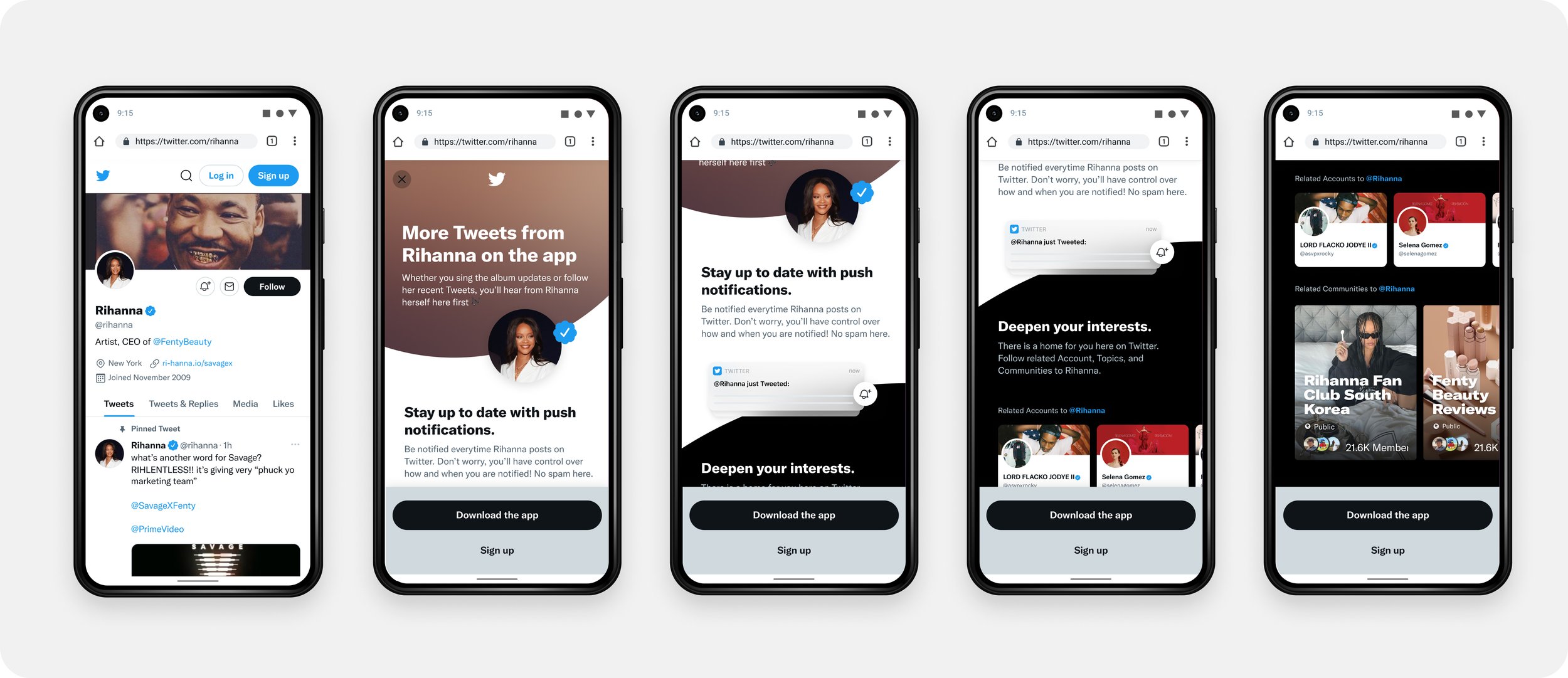
Logged Out Gating
Case Study: Twitter’s Logged Out Gating
Introduction
With approximately 500 million visitors accessing Twitter’s logged-out web experience each month—averaging 45 million daily—there is a significant opportunity to convert these users into registered members. This case study details the design process behind the Logged Out Gating Project, aimed at guiding users who are already deriving value from the platform to sign up through effective prompts.
Problem Statement
While many users engage with Twitter without logging in, a gap exists in converting this engagement into user registrations. Our objective was to increase login and signup rates by strategically prompting users to create accounts, leveraging their existing interactions on the platform.

Research
User Behavior Analysis
We conducted an analysis of user behavior on the logged-out Twitter web experience, identifying key touchpoints where users interacted with content. Insights revealed that users often engaged with Tweets, trends, and hashtags but did not see the full benefits of a registered account.
Data-Backed Hypotheses
Through data analysis, we formulated several hypotheses:
Users who frequently interact with content are more likely to register if prompted effectively.
Providing tailored content recommendations could incentivize users to sign up.
Users might be more inclined to register if they are informed about the benefits of an account.
Competitive Analysis
A review of how similar platforms handle user engagement in logged-out states revealed that effective prompts and value propositions significantly enhance signup rates.
Design Process
1. Defining User Personas
We identified key user personas based on engagement patterns, including casual browsers, content seekers, and trend followers. Understanding their motivations helped tailor our approach.
2. Ideation and Concept Development
Brainstorming sessions led to various concepts for signup prompts:
Contextual prompts that appear after specific interactions (e.g., liking a Tweet or exploring trending topics).
Highlighting exclusive features available only to registered users (e.g., personalized feeds, notifications).
A progressive disclosure approach, providing value before prompting users to sign up.
3. Wireframing
We created wireframes for different prompt designs, focusing on:
Clear and compelling messaging that emphasizes the benefits of signing up.
Visual hierarchy to draw attention to the signup prompts without disrupting the user experience.
Options for users to dismiss or engage with the prompts seamlessly.
4. High-Fidelity Prototyping
Using Figma, we developed high-fidelity prototypes incorporating visual elements and interactivity. These prototypes allowed us to simulate user interactions with the prompts in real-time.

Implementation
Collaboration with Developers
We partnered closely with the development team to ensure the design could be effectively integrated into the existing web infrastructure. Prioritizing responsiveness and performance was key to maintaining a smooth user experience.
A/B Testing
To evaluate the effectiveness of the new prompts, we conducted A/B testing comparing the traditional logged-out experience with our new design. Metrics for evaluation included:
Signup conversion rates.
User engagement levels with prompts.
Feedback gathered through quick user surveys.
Results
The implementation of the Logged Out Gating Project led to significant improvements:
Signup Conversion Rate: Increased by 25%, indicating that users were more likely to register when exposed to contextual prompts.
User Engagement: Engagement with prompts showed a positive response, with many users exploring the benefits of an account before deciding to sign up.
User Feedback: Surveys revealed a 30% increase in positive sentiment toward the signup process, with users appreciating the clear value presented.
Conclusion
The Logged Out Gating Project successfully demonstrated that strategic, data-informed prompts can effectively guide users toward signing up for Twitter accounts. By aligning the prompts with user behaviors and motivations, we created a seamless pathway from engagement to registration.
Future Considerations
Future explorations on gating experience who have built habitual use of Logged Out Web Twitter to download the Twitter app or sign up, while upselling push notifications, interest discovery, and conversation/safety controls to address common cognitive barriers to sign up.

Ongoing analysis will be essential to refine and optimize the prompting strategies. Future iterations could explore:
Personalization of prompts based on user behavior patterns.
Expanding the range of benefits highlighted in the prompts.
Testing additional placement strategies to maximize visibility and engagement.
By continuously iterating on the design and approach, Twitter can enhance user onboarding and create a more robust community of engaged users.